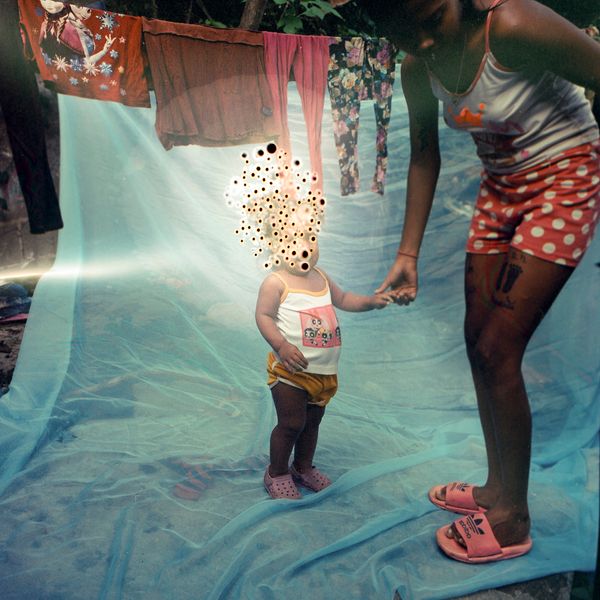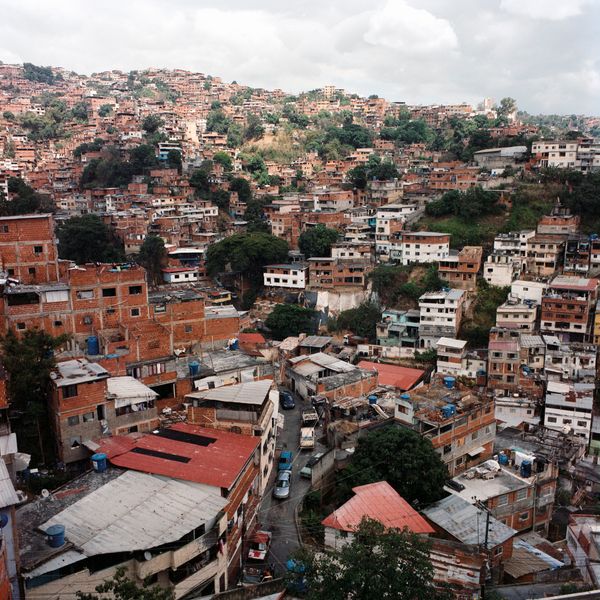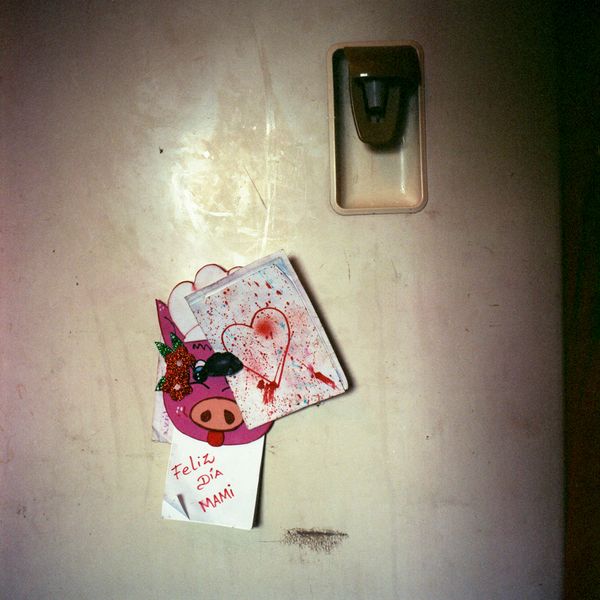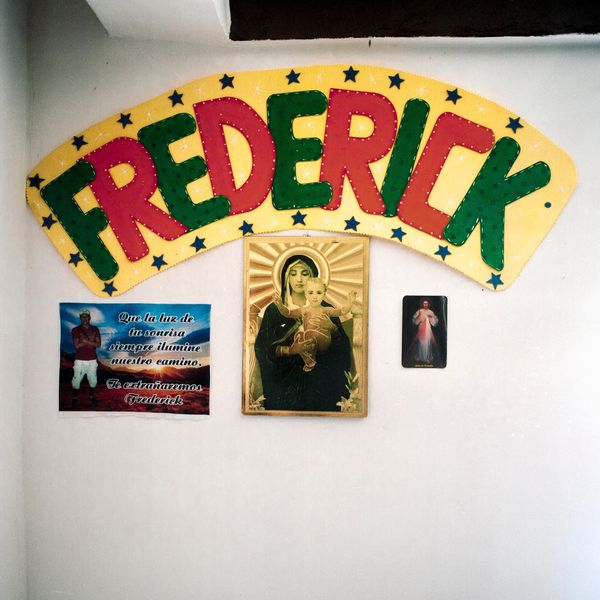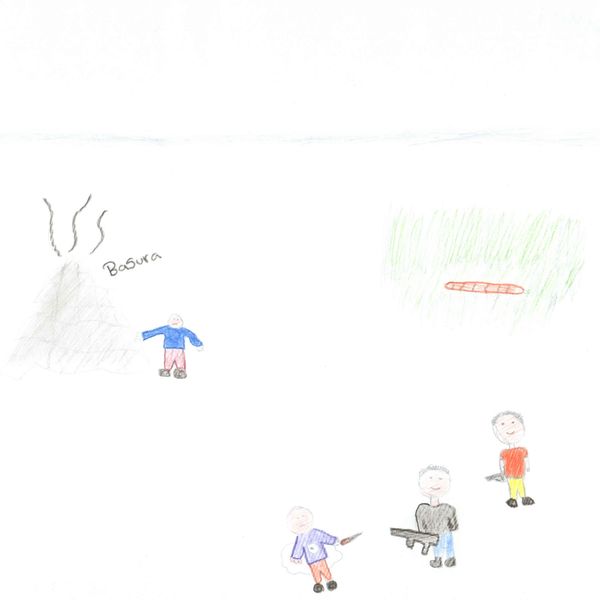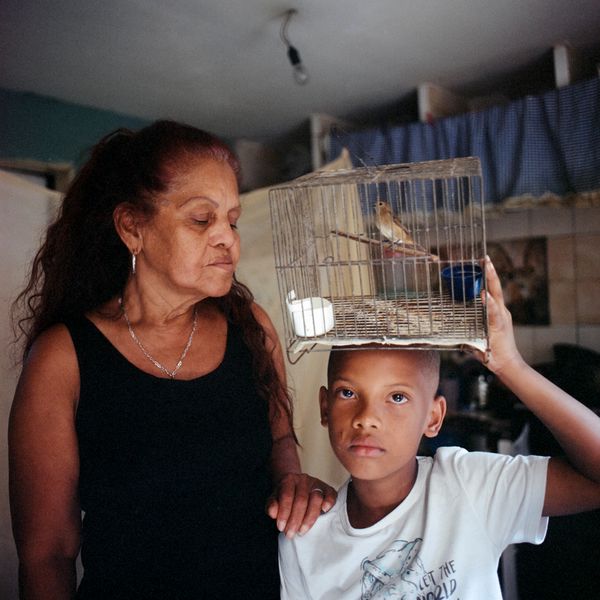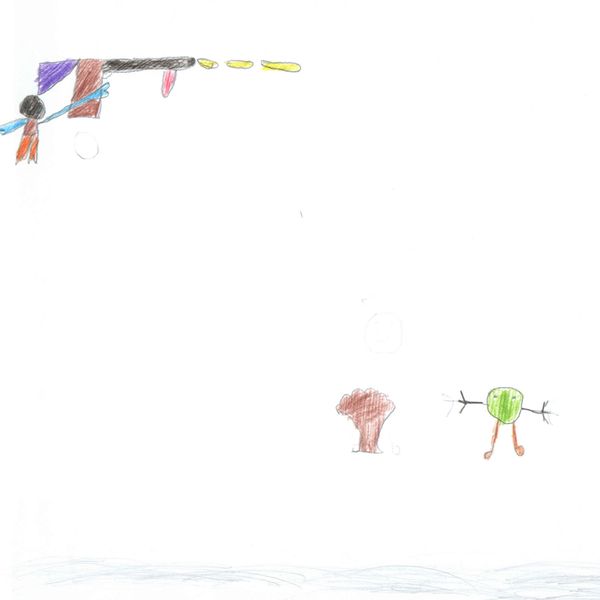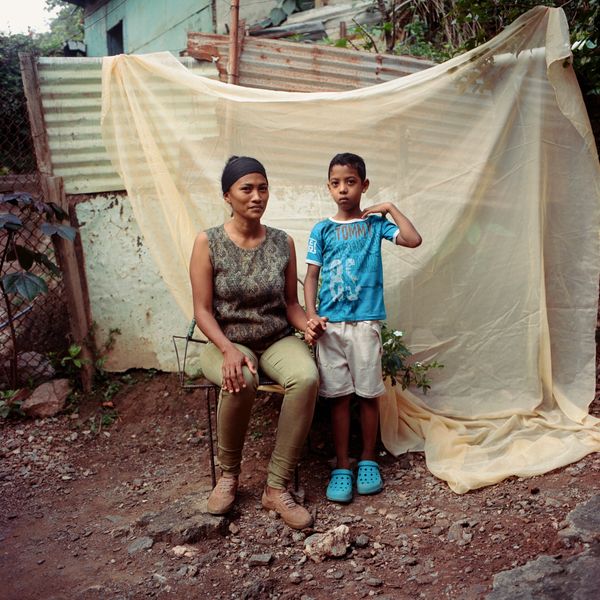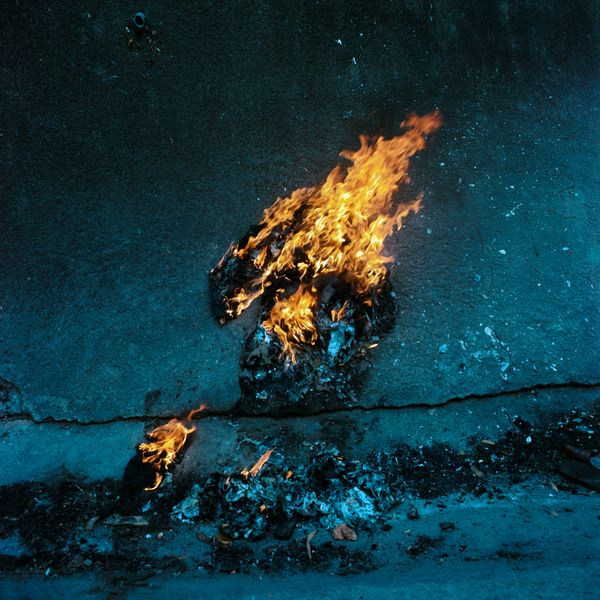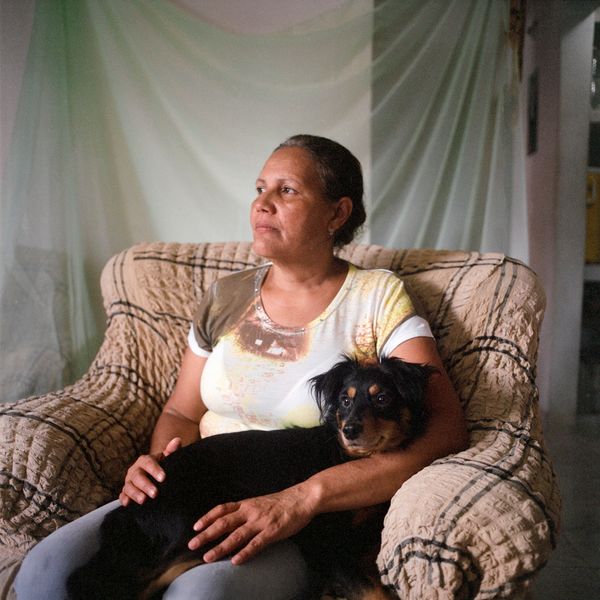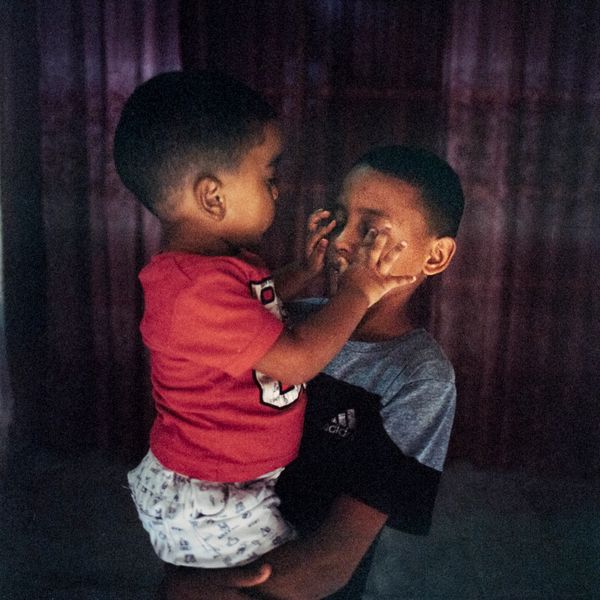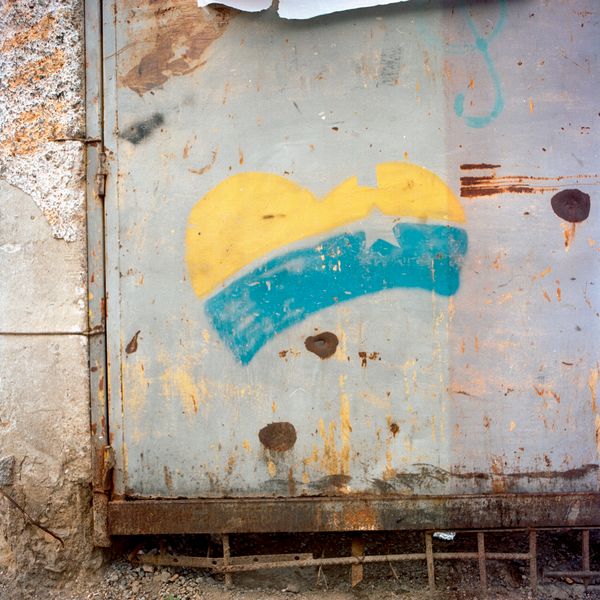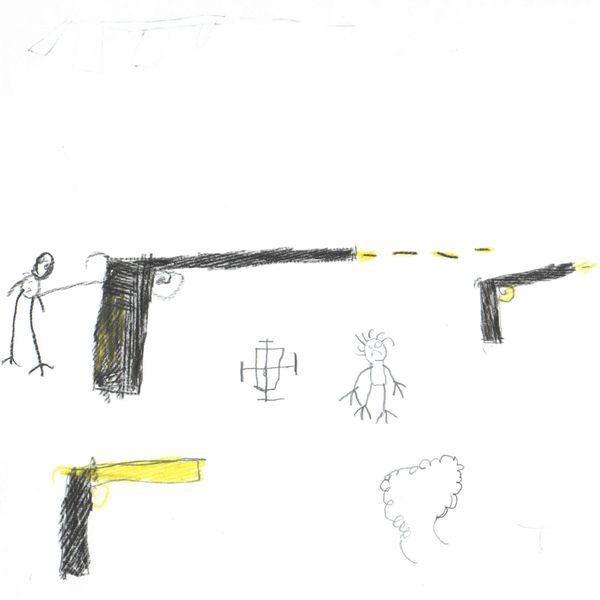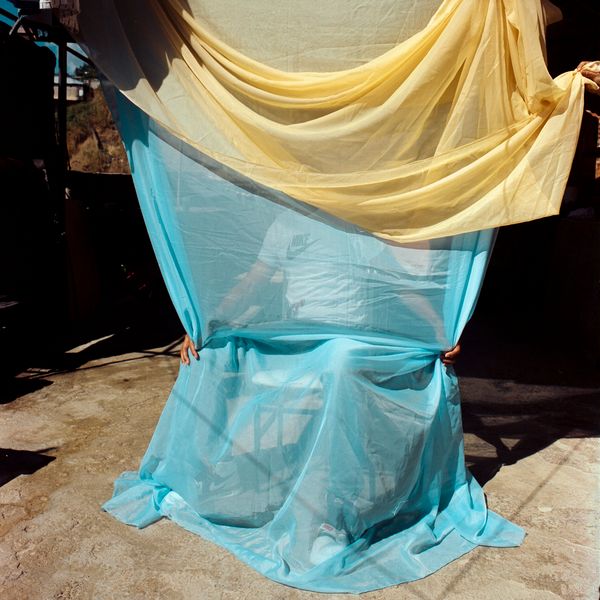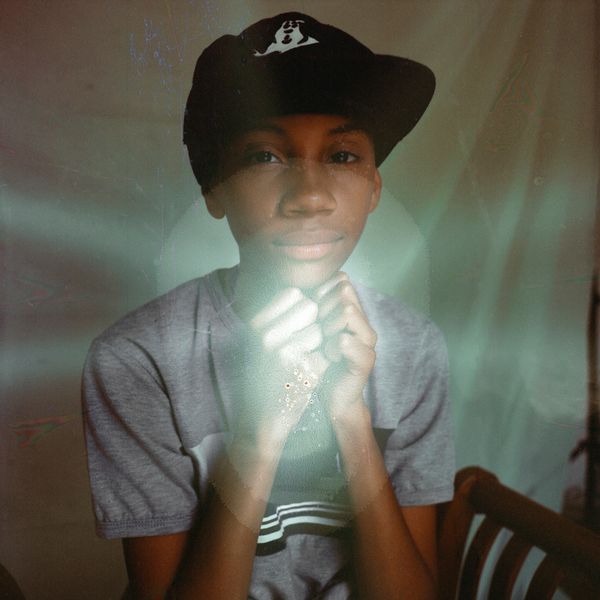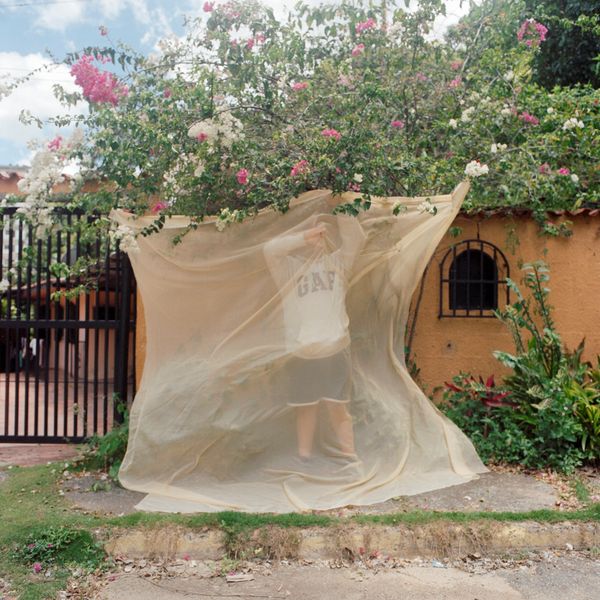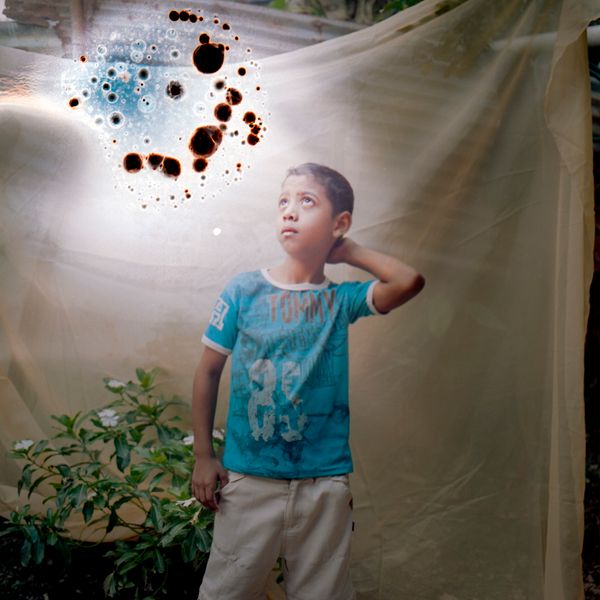Children Of The Void
-
Dates2019 - Ongoing
-
Author
- Locations Caracas, Venezuela
Children of The Void looks into the intersection of migration, matricentrism and violence in Venezuela through the gender perspective. It uses alternative processes to represent the tension of violence in communities and barrios of Caracas.
The first time I went up the stairs of the Cota 905 barrio, a young man holding a machine gun plastered with Air Jordan stickers was pointing at me with his firearm. His fierceness contrasted with the pink, blue and green pastel walls that surrounded him. These colors were chosen by the mothers that live in his community; the men had no say because they were not around when this decorative decision was made. They are itinerant in this barrio, as in most Venezuelan communities. Psychologist Alejandro Moreno and sociologist Veronica Zubillaga have written about the effects of the matricentric family structure on violence patterns. “Children Of The Void” is inspired by their work.
In the matricentric framework, the woman is the center of the family universe. Alone she carries all emotional and economic responsibilities. Her sons and daughters fend for themselves while she works elsewhere to provide for them. This has been aggravated by the all-round crisis that has resulted in the migration of more than 7 million people. Many of them are mothers who travel alone looking for ways to earn money to send back home.
After seeing my family, friends and colleagues leave the country, I have understood that one of the main causes for migration is the general feeling of insecurity, especially criminality, as a result of the economic crisis. I’m equally repelled and fascinated by the Venezuelan violence phenomenon. All of us have been touched by it in some measure and since this issue has only been documented using traditional photojournalism and through the male gaze, I embedded the gender perspective using alternative processes to add new layers of information. The burning of the negatives isn’t an accident, it represents the tension that violent acts leave in the community that witness them.
In search of the origin of this phenomenon, I turned to individual narratives that interact together as a group portrait. They all point towards the matricentric family structure. This project offers the stories of children left behind, gang leaders or “malandros”, active policemen and family members of extrajudicial killing victims. It also portrays how children left behind become easy prey for gang recruiters in impoverished communities, as the drawings symbolize. They were made by children that participated in a study by NGO Mi Convive when they were asked: What don’t you like about your community?
“Children Of The Void” moves away from the oversimplification that has polarized local and global public agendas in places with “iron fist” security policies like Latin America and Southeast Asia. It aims to make sense of a complex phenomenon that intersects migration, violence and matricentrism by looking at how elements that seem separate in theory interact in practice through the gender perspective.
